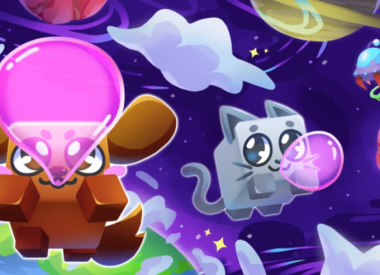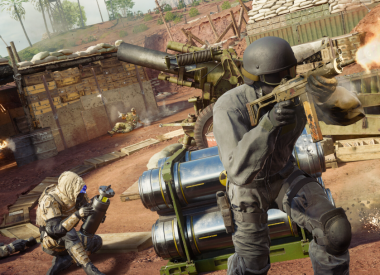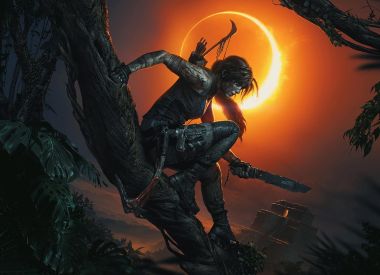With over five years spent in development, and quite possibly one of the biggest risks the studio ever took in its lifespan, Triumph Studios has released Age of Wonders: Planetfall, a 4X grand strategy title that’s divergent from anything else the developer has created for a number of reasons. First, Triumph stepped out of their comfort zone of the usual fantasy setting and into science fiction, trading magic and mysticism for a universe filled with intergalactic space travel, evolving technology, and the occasional sentient plant. Secondly, it’s the first Age of Wonders title the studio released for consoles, which is a very interesting decision to say the least.
All history aside, and with over a month since it’s been released, Age of Wonders: Planetfall proved to be a refreshing move in the right direction for Triumph. Launching to a very positive reception, it showed the efforts of the studio over the last five years have paid off.
One major factor that helped quickly draw players in are the many quirky factions in the game. With six of these unique races vying for control in what can only be described as a Dark Age set in space, Planetfall’s mix of variant tech-infused gameplay and interestingly written and designed factions paved the way for its success.
Of the six factions currently available, only one falls outside of the humanoid archetype: The Kir’Ko, a race of insect-like beings that are tied very closely with the Space Union and its subsequent downfall. The Kir’Ko are perhaps one of the most intriguing of the factions in Planetfall. Player.One had the pleasure of talking to Triumph Studios co-founder and Age of Wonders: Planetfall director Lennart Sas on the roots of the Kir’Ko, the inspiration the studio drew from, and how the developers stepped out of their usual fantasy leanings to look above and beyond the final frontiers of space.
“[We’ve] got a personal ambition to do something else [other than fantasy] through all those years,” Sas told Player.One regarding the studio’s decision to move to science fiction. “But we felt that the turn-based formula that we developed for Age of Wonders (which is very much war-focused) would make a very good match for a different arsenal of weapons – sci-fi arsenal of weapons, instead of having cavalry, with swords and archers… maybe going with bigger guns, laser cannons and tanks.”
While the move itself was pretty straightforward, it was also something that ended up revitalizing the Age of Wonders series and the 4X genre as a whole. “Thematically, it was also very inspiring to look at what we can tell about our future,” said Sas. “4X games are all about progression, starting somewhere, evolving into something new… Of course, sci-fi is all about that, too.”
In a poetic sense, evolution also sits at the heart of the factions present in the game. However, given the immediate scale of what we’re seeing in Planetfall versus the seeming lack of variety when it came to the factions you can play as, Sas also made note of a few interesting design choices that all culminated in what the game is today.
“We wanted to give all the factions a common origin,” Sas said. “This is a terrestrial-based fantasy, and if people are to meet there and if they’re all alien [to each other], we need a lot of explanation [as to] why are all these people suddenly coming back together. We wanted to give the people a common origin, so they had existing conflicts with each other… there’s a lot more worldbuilding you can do when everything comes from a source, [and] everything has a history that at one point diverged.”
Scaling the scope back worked amazingly for Planetfall, as the shared history – with the rise and fall of the Star Union at the center of it all – created a rather dense universe despite its lack of biological variety. Delving deeper into the Kir’Ko, whose struggles within the confines of this post-cataclysmic universe unfold in Planetfall, Sas provided some insight and clarity as to how these space-faring insects became such an important piece of the overall universe.
“The main inspiration was that we wanted to have a sort of victim of the empire’s imperialism,” Sas noted, referring to the concept of the Star Union, which in a lot of ways parallels the Roman Empire. “The Star Union is modeled after human empires, and of course there were always victims to human empires, people who were exploited… the Kir’Ko was sort of a testament to that.”
The parallels with the aforementioned Roman Empire don’t end there, as the backdrop of the Star Union’s fall ultimately sets the stage for Planetfall. Six factions arise from the ashes, all with different motives and ambitions to further their mark in this power vacuum and secure their place in this brave new world. With the Kir’Ko’s independence, and their status as former slaves to an empire that systematically abused their people, their rise to power may be the catalyst for well-deserved retribution.
“The Kir’Ko was played [off] the insectoid space trope, like the Zerg or Starship Trooper bugs,” Sas said. “In those they were always nasty, and we thought, ‘let’s make them the underdogs.’ And if they became nasty, it was because [of] what was done to them. They were just another type of life form [until] the humans came along and lobotomized their hive minds and turned them into slaves, third-rate inhabitants of the Star Union.”
In a lot of ways, the Kir’Ko also are the most surprisingly subversive when it comes to their appearances. As much as I hate to say it, the insectoid portrayal of aliens has never been too flattering, often making these space bugs out to be uncaring, cold, and at times violent creatures with a penchant for either probing your various cavities or melting off your limbs and digits with highly acidic secretions.
Well, I guess some things never change, as the Kir’Ko do make use of biochemical warfare when it comes to gameplay in Planetfall. That said, Triumph made these creatures more agreeable, and in a lot of ways they can be described as the true protagonists of the game, owing to their tragic past as victims of the consequences of unchecked industrialism and growth. In this line of reasoning, a lot of similarities can be noted to the Kir’Ko and the prawns from District 9, a sci-fi film that deals with very similar themes bordering on xenophobia and the lack of respect for other life forms.
“We thought that was a very interesting origin story, as well as giving [the Kir’Ko] a clear goal on how to develop. Their mission is to rebuild their hive mind, [and] the main theme is to take a look at [what] they would do with the former human factions of the Star Union,” Sas stated.
Of course, what happens next for the Kir’Ko is in the players’ hands: reconciliation or retribution. “It’s the big choice that [players] need to make,” Sas added, highlighting player choice as something that ultimately matters for proper enjoyment of this grand strategy 4X title. This particular aspect added a ton of stakes to this alien race, as it makes the Kir’Ko and their decisions throughout the campaign the heaviest deciding factors of this Star Union-less universe.
Perhaps another interesting aspect is the actual development for the Kir’Ko, and how it seemed to click within the actual universe of Planetfall. Sas mentioned that there was already a clear idea of the Kir’Ko and their place in the Star Union after the latter’s inception, which goes to show how much it drew from historical imperialism mixed in with tons of science-fiction tropes.
“Let’s start by removing the hive mind and them needing to rebuild it,” Sas said. “Thematically, [the studio] stuck to its original plan from the first year of development. What did change, of course, was how [the Kir’Ko] was kitted out [in terms of] weapon groups, special abilities.”
Gameplay-wise, the Kir’Ko end up relying on the biological capabilities of their own bodies as well as the psionics that they developed from their intimate connection with the hive mind. However, despite their seemingly natural attunement to warfare thanks to the horrors they can inflict, a lot of the developed backstory for the Kir’Ko allows their tale to be woven with different threads in the grand scheme of things.
“[The Kir’Ko] can be played quite offensively [as] they’re a swarm race,” Sas said, comparing their play style to the Zerg rush from Starcraft. The Kir’Ko’s ranks can be easily bolstered by numbers, and with an ever-evolving tech tree at their disposal, it’s not hard to kit them cheaply and very early in the game without losing out on proper effectiveness. “Of course, there is a certain opportunity to also play them diplomatically… they are the underdog, and we wanted to make them likeable, too. There are some [upgrades] to make them more diplomatically skilled.”
That said, it seems that players still see more value in applying a more militaristic approach to the Kir’Ko as Sas himself noted, and it’s not the least bit surprising. With Sas describing their early game approach as “glass cannons,” the Kir’Ko are easily one of the strongest factions in the opening phases of the game thanks to how much diversity can be applied to their tactics. He also briefly mentioned the Frenzied, which is the faction’s Tier I melee unit; while these can be easily killed, they can also be used with a number of different mods.
“Including the Resuscitation Glands which allow [the Frenzied] to resurrect, giving them the Tunneling Claws so they can dig underground and attack enemies from behind, [these] are some of the mods to buff them further,” Sas said.
There was also great care placed into making some of the earlier units relevant much later into the game, where players start gearing up for their own chosen end. “The Frenzied at first seems like a very weak unit, but that can be taken in so many different directions,” said Sas.
At their core, the Kir’Ko seemed to be designed from the ground up to be a very subversive and interesting take on endearing protagonists. Despite their disgusting designs, with Sas himself noting of the endgame unit Harbringer and how it is his favorite in terms of pure aesthetics, the Kir’Ko’s place in the universe of Planetfall gives them a unique view on how the universe should continue. With that in mind, I asked Sas to play a hypothetical game consisting of the first 20 turns, asking him how he would spend it if his Kir’Ko faction was propped against very hostile Vanguard and Syndicate factions.
“I think the first thing is to decide whether you’re going to go to war with them or not,” Sas started enthusiastically. “Of course, you also need to prepare for war even if there’s peace. I would go for buffing up the main meat and bones of your army which is the Frenzied… I think the Unshackling is always a good one to take first, and try to make your way up to Resuscitation Glands, [which] is one of the key things to have.” He also noted of the upcoming patches and changes, especially for the Kir’Ko, and how they can be less extreme when it comes to their strength in the later stages of the game.
When I prodded him on who he could end up playing diplomat with, Sas just flatly said, “I would never play diplomat with Syndicate.” Funnily enough, whether or not you’re playing this game while keeping role-playing in your mind, his answer made a lot of sense. The Syndicate is one of the human factions that sprung from the fall of the Star Union, made up of aristocracy and former slavers – in today’s terms, they would be better known as sociopaths who became wealthy through immoral means. Even when you’re teaming up with them for gameplay reasons, the Syndicate can still pretty much bend you over and take advantage of you, which is a subtle contrast to the plights of the Kir’Ko.
While the gameplay for Planetfall does allow for some open-endedness thanks to the various choices you can make, Sas was mum on the question of what a canon ending could be for the Kir’Ko as he would have played it. He did, however, confirm that the studio was aware of links between Planetfall’s Kir’Ko faction and the Shadow Demons from Age of Wonders II being made by fans of the series. While he was coy on elaborating further, he did go so far as to mention the “multiverse” theory.
“If [the Kir’Ko] were the Shadow Demons (and I’m not confirming), then the canon ending would be that they went for the path of vengeance,” Sas remarked. “But I like the underdog Kir’Ko a lot. [You] play the campaign, they go on to their journey back to the homeworld… I like the Kir’Ko as personally being the nice underdogs, going for harmony.”
On the outset, the Kir’Ko have every right in the universe to demand retribution. The Star Union’s conquest was not without its consequences, and for Planetfall it meant the loss of the race’s core identity through their hive mind, a sacred aspect of their entire being. Ironically enough, this also led them to consider different paths, as their almost transcendent experience noted a never-ending circle of viciousness and hate. It’s this duality that made the Kir’Ko one of the studio’s best written successes: a faction of a broken and aimless people hoping to find their place in a world that always shunned them, all set in the aftermath of the fall of a once great and powerful empire.
Our exclusive with Planetfall director Lennart Sas also covered some more information on the game’s development, its future, and Triumph’s plans for other projects – stay tuned for a transcription of some more questions answered in a follow-up feature.
Age of Wonders: Planetfall is now available to play on PC, Xbox One and PlayStation 4. Check out my review for Planetfall here, as well as links for guides to Planetfall below.
- Age Of Wonders: Planetfall Guide - What To Get First In The Society Tech Tree
- Age Of Wonders: Planetfall Guide - The Best Early Game Military Tech For Vanguard
- Age of Wonders: Planetfall Guide - The Best Early Military Tech Upgrades For Kir'Ko
- Age of Wonders: Planetfall Guide - The Best Early Military Tech For D'Var
- Age of Wonders: Planetfall Guide - The Best Early Military Tech For Assembly
- Age of Wonders: Planetfall Guide - The Best Early Military Tech For Syndicate
- Age of Wonders: Planetfall Guide - The Best Early Military Tech For Amazons
- Expansive turn-based and 4X elements, with tons of freedom of choice.
- Diverse races, with lots of distinctions between each one.
- Strategic gameplay rewarded and limited by your own creativity and imagination.
- In-depth tech tree with a ton of branching paths to go through.
- Easy to get into for casual players of the genre.
- A bit daunting at first, which may put off and overwhelm some players.
- Lacking in sound design and the music department.
- Not very intuitive at times, with some tedium setting in once your empire gets bigger.


















